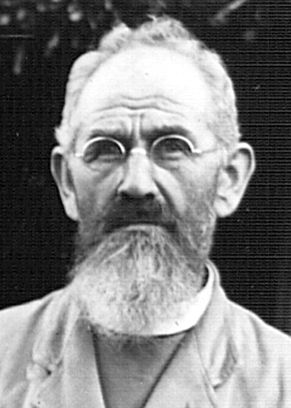View entry
Name: HORBER, Jacques J. (Father)

Birth Date: 15.6.1881 Bütschwil, St Gallen
Death Date: 29.9.1974 Mombasa
First Date: 1910
Profession: Missionary
Area: Kilunzu, Ulu
Book Reference: Red 31, Hut, Red 22, Baur, Red 25
General Information:
Red 22 - Fr. J. Horber, RC Mission, Kilungu, Ulu Baur - in 1918 there was a change of the guard: Fr. James Horber took over. He decided to penetrate deeper into Kambaland and look for a field that might yield a better harvest. …………. Father Horber stayed in Kilungu for 20 years.
Red 25 has Rev. Fr. J. Horber, Catholic Mission, Kilungu, Ulu
HGM Holy Ghost Mission (web) Fr. Jacques Horber, whose years of missionary service in Kenya allowed him to see the entire development of the Church from a small struggling mission to a dozen dioceses, mostly staffed by African bishops and clergy, in later years, was never very eager to expand on his time in Kiambu. His stay in All Saints seems to have been a rather long-drawn-out, solitary and frustrating expe- rience. Obviously a "strong" man. But the Kikuyu had been bullied and bashed too much already. Fr. Horber set out from Kiambu in February 1918 to conquer the hearts of the Kamba people for Christ. Six Kamba converts from Kiambu will become the nucleus of the new Christian community. He is exchanging places with Fr. Leconte who has been labouring there without result since 1913. By 1922, Fr. Leconte has fallen gravely ill and must be repatriated.
Henry J. Koren, Spiritan East African Memorial, 1994 He made his vows at Chevilly on October 20, 1904 as one of the 39 who did so in that month. After studying there, he became in 1906 one of the ten who were selected to go to the University of Fribourg for theology. He was ordained at Chevilly on October 28, 1910. Assigned to the Zanzibar vicariate, he embarked in September, 1910 for that destination. Bp. Allgeyer placed him at St. Austin's, Simonisdale (Nairobi). By that time many people from the coastal areas had arrived there in search of work. They brought their germs with them. As a result, in that "paradise in the tropics" in the Kikuyu highlands, hitherto unknown diseases, such as the plague, malaria, meningitis and typhoid fever were making many victims. Fr. Horber caught typhoid fever, but after spending three months in the hospital he could resume his work.
In 1913 he went to Kiambu, of which station he became director two years later. With all his energy he worked successfully at creating a nucleus of fervent Christians whose example, he hoped, would draw others to follow. In 1920 we find him in charge of opening a new mission at Kilungu. He ministered there for about two decades and, during World War Two, could hand over to his successor a parish with some 2,000 Christians and catechumens and a solid movement toward the Church among the remaining population. In 1947 the number had almost doubled.
By then he was 66 years old and had been reassigned to Mbiniti. In 1952 we find him on a more or less reduced schedule at Giriama, but still vigorous. When he died after 63 years in Kenya he had been privileged to see almost the entire development of the country from colony to independence and the growth of the Church from a small struggling mission to a dozen dioceses, mostly headed by African bishops and a largely African clergy.
Henry J. Koren, Spiritan East African Memorial, 1994 He made his vows at Chevilly on October 20, 1904 as one of the 39 who did so in that month. After studying there, he became in 1906 one of the ten who were selected to go to the University of Fribourg for theology. He was ordained at Chevilly on October 28, 1910. Assigned to the Zanzibar vicariate, he embarked in September, 1910 for that destination. Bp. Allgeyer placed him at St. Austin's, Simonisdale (Nairobi). By that time many people from the coastal areas had arrived there in search of work. They brought their germs with them. As a result, in that "paradise in the tropics" in the Kikuyu highlands, hitherto unknown diseases, such as the plague, malaria, meningitis and typhoid fever were making many victims. Fr. Horber caught typhoid fever, but after spending three months in the hospital he could resume his work.
In 1913 he went to Kiambu, of which station he became director two years later. With all his energy he worked successfully at creating a nucleus of fervent Christians whose example, he hoped, would draw others to follow. In 1920 we find him in charge of opening a new mission at Kilungu. He ministered there for about two decades and, during World War Two, could hand over to his successor a parish with some 2,000 Christians and catechumens and a solid movement toward the Church among the remaining population. In 1947 the number had almost doubled.
By then he was 66 years old and had been reassigned to Mbiniti. In 1952 we find him on a more or less reduced schedule at Giriama, but still vigorous. When he died after 63 years in Kenya he had been privileged to see almost the entire development of the country from colony to independence and the growth of the Church from a small struggling mission to a dozen dioceses, mostly headed by African bishops and a largely African clergy.
